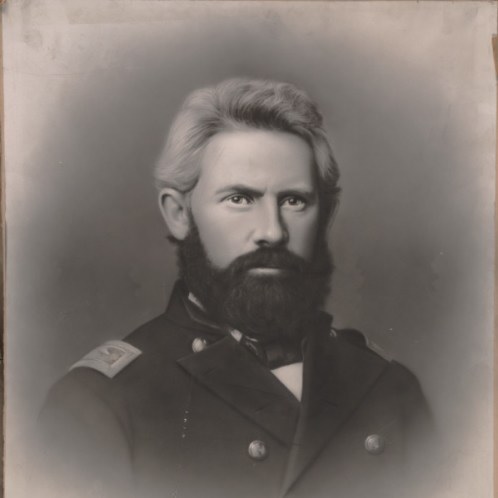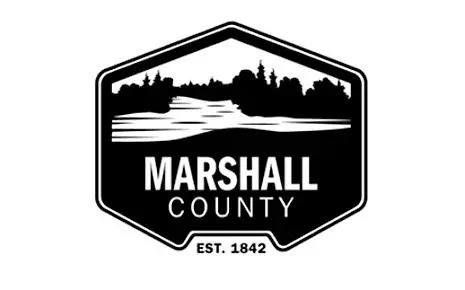SOUTH CAROLINA OF KENTUCKY PART VII:
GENERAL PAINE’S FEDERAL SALVATION
Written by Justin Lamb

General Paine
The date of July 19, 1864 was a day which many Civil War-era Jackson Purchase residents would soon not forget. For this was the day Brigadier General Eleazer A. Paine returned to Paducah to assume command of the area. Paine had been to Paducah briefly during Grant’s first occupation in 1861 and many of the residents remembered his belligerent manner and forceful attitude toward the townspeople. Paine was known for his frequent threat of “Damn you, I will dig a hole, shoot you in the damn head, and put you in it!” Despite orders from General Ulysses S. Grant to “go easy on the citizens of Paducah” in 1861, General Paine ignored his wishes, and after meeting with the Union supporters in Paducah, Paine concluded that they could not be trusted any more than the Rebels. A day after General Grant left Paducah, General Paine “accidentally” fired a gun from one of the gunboats into the city of Paducah with the intent to terrorize and intimidate the citizens of Paducah. Paine later wrote General Grant stating, “He was compelled to be severe for every man is a rank secessionist” and he soon gained a reputation as a harsh and ruthless man as his reign of terror began.
Several accounts of Paine’s abuse of power became widespread throughout the region. On one occasion, Paine ordered a local blacksmith to shoe his horse, but when the blacksmith refused, Paine had him arrested and gave him two options: shoe the horse or be shot down. In another incident, one wealthy aristocratic lady displayed a Confederate flag over her large home in opposition to the Yankee occupation. Upon the orders of General Paine, Union troops tore down the flag and hoisted up the Stars and Stripes while they played “Yankee Doodle.” The owner of the home was told never to raise a rebel flag over the home again or her entire house would be completely demolished. The tactics employed by Paine led the citizens of Paducah to further their commitment to the Confederate cause out of resentment of the Union army occupation under Paine. It was later said that “Paine did more to bolster Confederate support in Paducah than anyone who swore an oath to the Confederate flag.”
To further rid the city of rebel rousers, General Paine ordered the execution of all suspected Confederate guerillas in the area and soon took aim at the Jewish population of Paducah. Illegal trade became a major issue for the Union army as Confederate supporters in the Purchase were shipping many items such as cotton, corn, livestock, and produce to the South in order to aid with the Southern war effort. In response, Federal gunboats heavily occupied the rivers of the Purchase in an effort to squash any aid to the Confederates. General Grant issued General Order Number 11 which expelled the entire Jewish population from Paducah. “The Jews, as a class violating every regulation of trade established by the Treasury Department and also department orders, are hereby expelled from the department within twenty-four hours from the receipt of this order.” The order would eventually be rescinded by President Lincoln. Under Paine’s control, Paducah became like a ghost town as stores closed up out of fear and no one walked the streets trying to stay out of Paine and his troops’ wrath. Many packed up and sought shelter in the countryside and neighboring counties.
Illegal trade with the Confederacy increased in the area out of further spite to General Paine. Paine was given new orders to secure the railroads of the area and he and his men were sent out to tighten their grip on the countryside of the western Kentucky and Tennessee areas. His headquarters was soon moved to Gallatin, Tennessee because it was a center for all area railroads. Gallatin resident, Alice Williamson, kept a diary during the war and often referred to General Paine in her writing as “Our King”, “His Lordship,” and “Old Hurricane.” Paine and his men crisscrossed the area terrorizing civilians and executing Rebel spies without trial. His execution methods became a “game” and Williamson recorded in her diary one method called “chasing the fox with fresh horses” where his men on fresh horses would chase down and kill prisoners who were set free on old horses on court square.
On March 25, 1864, Confederate General Nathan B. Forrest led his legendary raid into Paducah which greatly alarmed Union forces. The successful raid gave a morale boost to Confederate supporters in the area, and not long after, three Unionists were murdered by Confederate guerillas in Marshall County on May 9, 1864. Three days later, Confederate guerillas made an attack on nearby Mayfield which was the home of Congressman Lucian Anderson. Frantic that Union gains were being lost in western Kentucky, Congressman Anderson pleaded with President Lincoln to return Paine to Paducah.
In July, under Special Order 83, General Paine returned to Paducah to assume command of the entire Jackson Purchase region and put an end to the illegal Confederate trade and guerilla warfare tactics. The citizens of the town who remembered his first reign of terror nervously held their breath. Under Paine’s “plan of salvation” that intended to teach the Purchase secessionists for “having encouraged this rebellion, having comforted and aided the country’s enemy, you must, and shall reap a traitor’s reward.” Paine seized the bank deposits of all men in the Purchase suspected of Confederate sympathies and he placed an ad valorem tax on tobacco and cotton with the proceeds going to compensate Union refugees. Purchase secessionists were also fined a fee in order to compensate Union widows five-thousand dollars each.
Several Purchase residents were banished from the area. Many people from Columbus and Paducah were shipped off to Canada. Mrs. Rebecca Eaker of Mayfield was fined $10,000 and was given 10 days to pack her belongings and go to Paducah where she was later shipped to Central America. Eaker’s sons were suspected of being Confederate guerillas and were accused of taking part in the death of J.B. Happy, a local Mayfield Unionist. Another Rebel guerilla, Jim “Old Kess” Kesterson was interrogated about the murder of Happy to which he proudly confessed. The following morning, General Paine ordered a group of black Union soldiers to march Kesterson to the banks of the Ohio River where they shot him in the stomach. After begging for his life, the soldiers reloaded and shot Kesterson in the head. Paine used the execution of Kesterson as warning to Confederate guerillas in the area.
Eventually Governor Bramlette sought to intervene after hearing of Paine’s harsh treatment of the Purchase area. “Our state is being treated like a rebellious and conquered province,” Bramlette wrote President Lincoln. On September 3, Paine was relieved of his duties in the Purchase and fled for Illinois. “He is not fit to have a command where there is a solitary family within his reach favorable to the Government,” wrote General Grant.
A congressional inquiry into General Paine actions was held in Paducah by Secretary of War Edwin Stanton in February 1865, but Paine was cleared of any wrong doing. His acquittal enraged the citizens of the Jackson Purchas and antipathy toward the Union army and Republican Party set in for generations. Many Purchase residents would often spit on the ground when anyone dare uttered the name of “Ol’ General Pain.”






